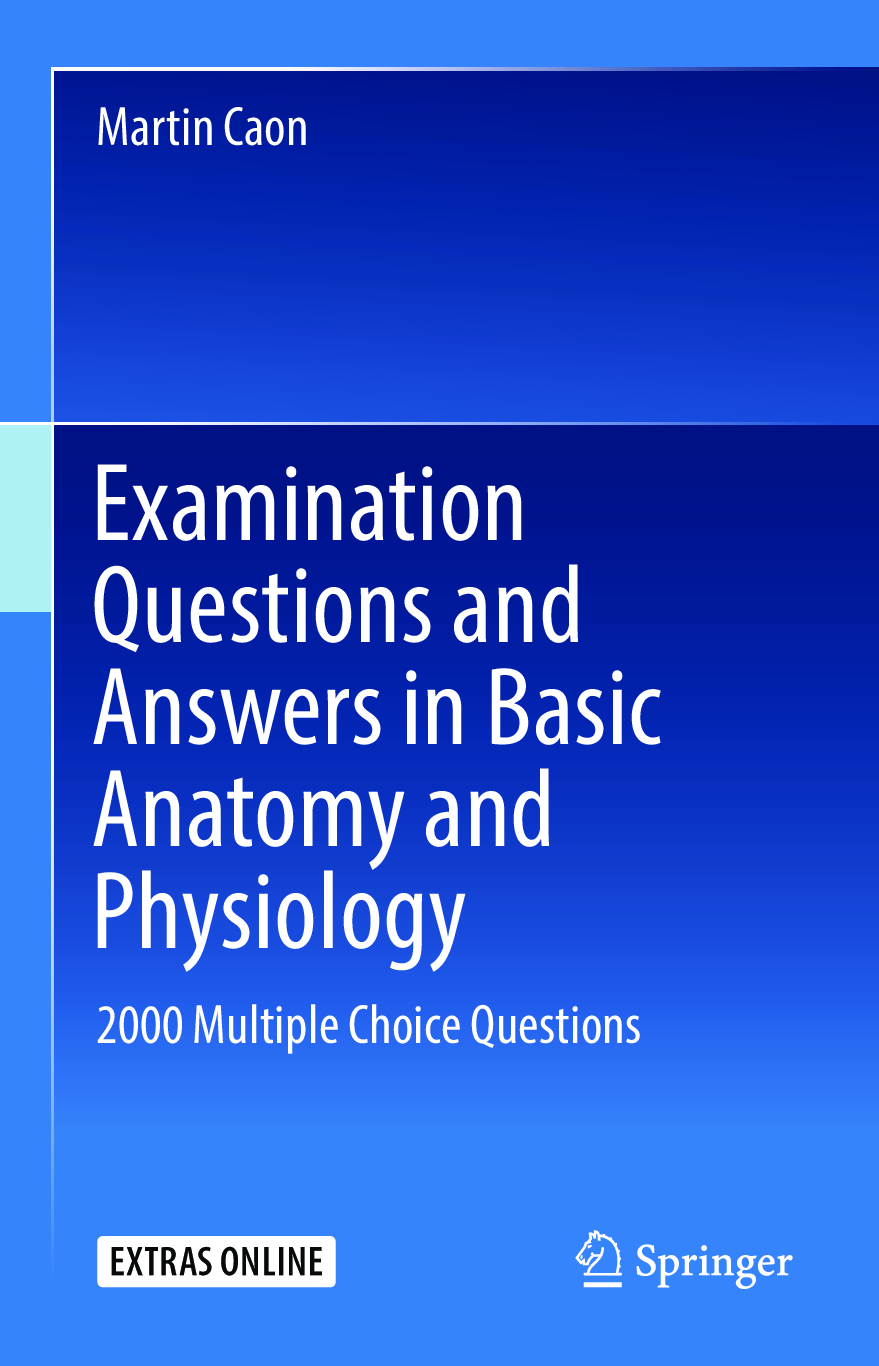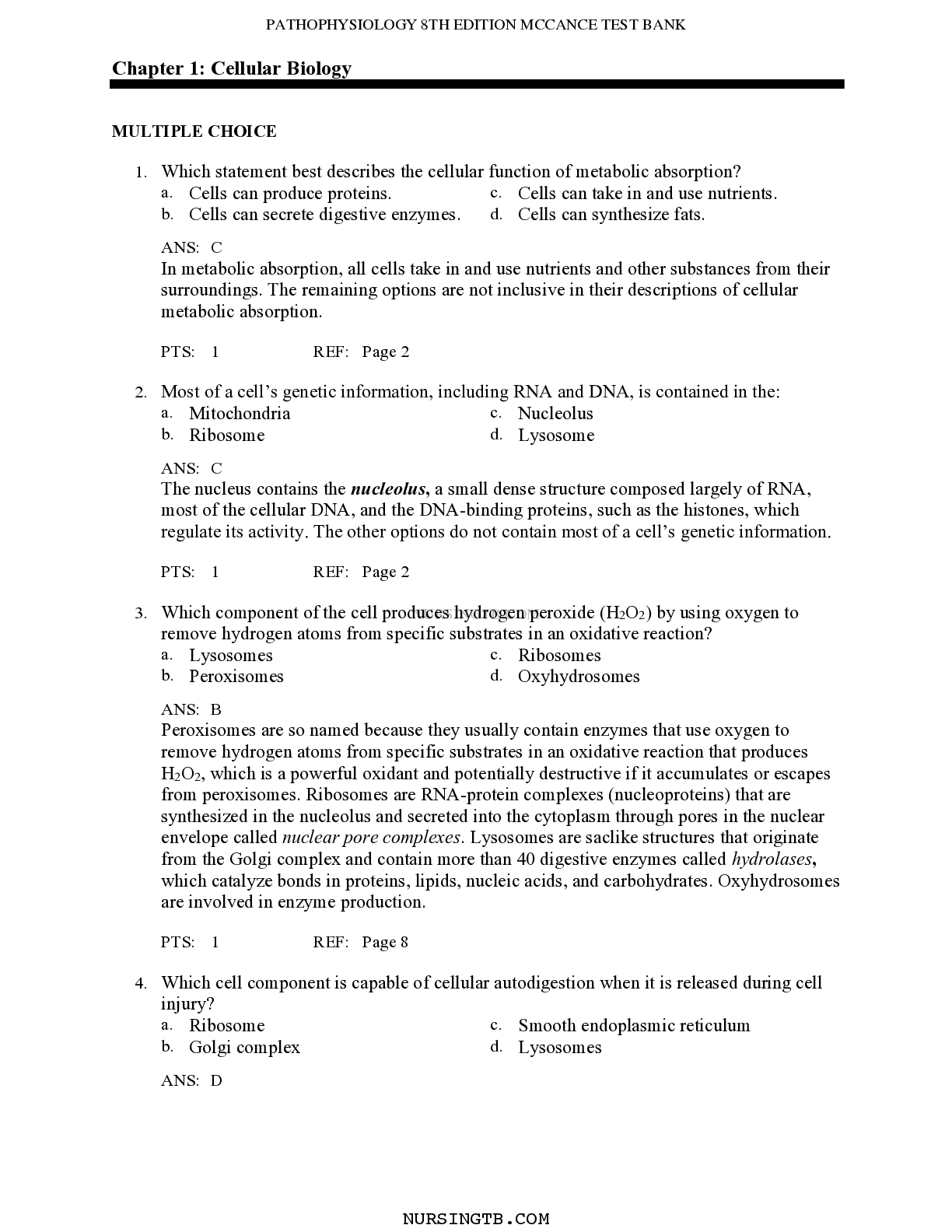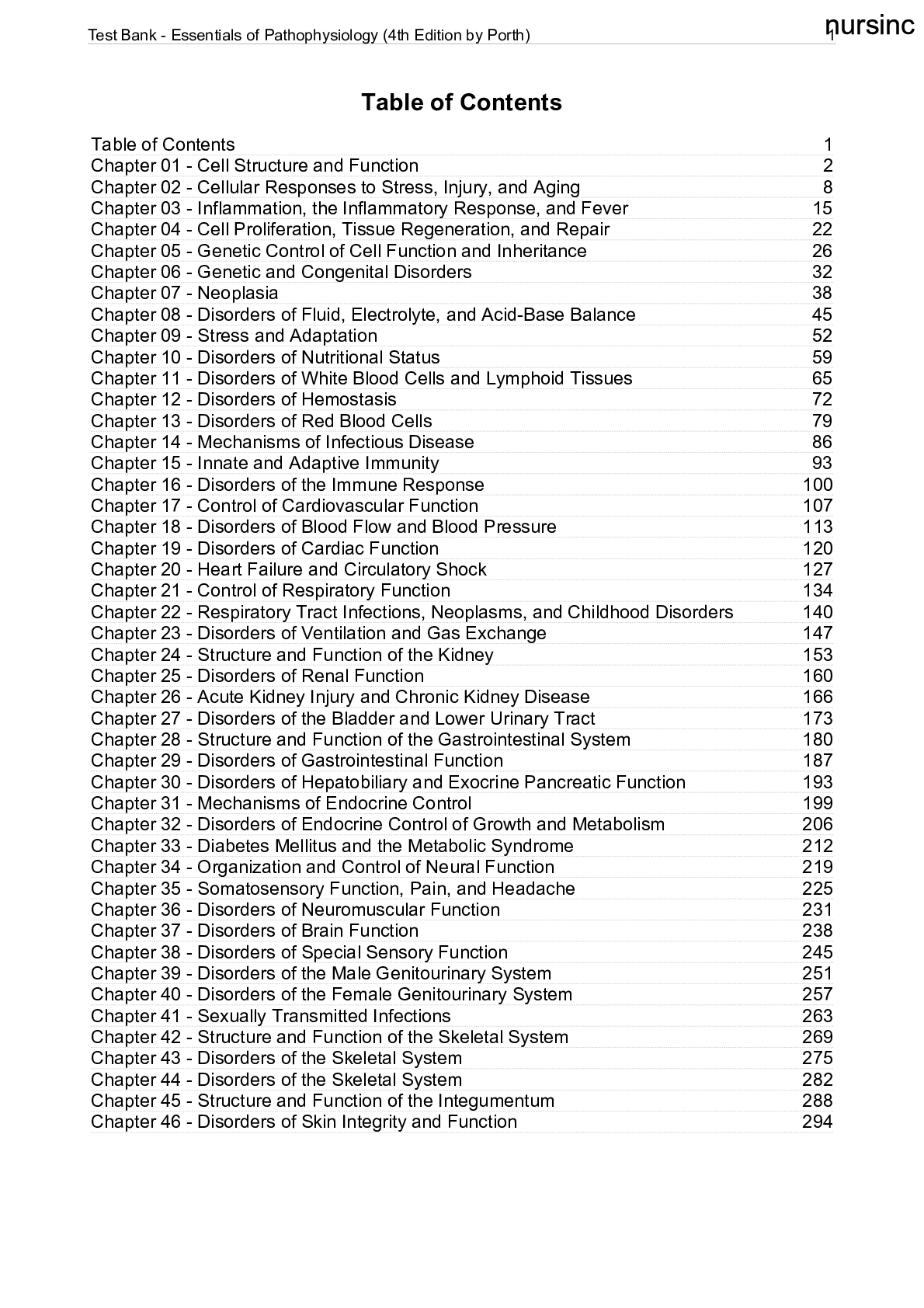Business > TEST BANKS > The University of QueenslandSCHOOL OF MGTS 7601Chapter 05 motivatons.Testbank ( 80 QUESTIONS WITH 10 (All)
The University of QueenslandSCHOOL OF MGTS 7601Chapter 05 motivatons.Testbank ( 80 QUESTIONS WITH 100% C0RRECT ANSWERS ) WITH ANSWER KEY
Document Content and Description Below
Chapter 05 Testbank Student: ___________________________________________________________________________ 1. Employee engagement is typically described as emotional involvement in, commitment to and ... satisfaction with work. True False 2. Needs hierarchy theory explains how people develop perceptions of fairness in the distribution and exchange of resources. True False 3. Maslow's needs hierarchy theory takes a holistic approach by condensing the long list of needs into a hierarchy of five basic categories. True False 4. According to needs hierarchy theory, the satisfactionprogression process does not apply to the fulfilment of selfactualisation needs. True False 5. One disadvantage of other needs theories over Maslow's needs hierarchy theory is that they assume that everyone has the same needs hierarchy. True False 6. A person's hierarchy of needs is influenced by his or her values. True False 7. Two drives identified in fourdrive theory are the drive to acquire and the drive to bond. True False 8. In fourdrive theory, the drive to bond does not produce any emotional markers. True False 9. David McClelland's research on the need for achievement concluded that all needs are instinctive and fixed for life. True False10. People with a high need for achievement make better entrepreneurs. True False 11. According to learned needs theory, people with a high personalised need for power enjoy power for its own sake and use it to advance their careers rather than to benefit others. True False 12. According to fourdrive theory, organisations maximise motivation by focusing employees on opportunities to fulfil only one of the four drives. True False 13. Expectancy theory of motivation states that people naturally direct their effort towards desired outcomes. True False 14. One way to increase an employee's EtoP expectancy regarding a specific task is to increase the person's selfconfidence through counselling and coaching. True False 15. Employee motivation is explained reasonably well by the expectancy theory model. True False 16. Expectancy theory identifies emotions as a key component of employee motivation. True False 17. Goal setting tends to be more effective when the goals are specific rather than general. True False 18. Goal setting is more effective when employees can easily complete the goals assigned to them. True False 19. Feedback is a source of motivation as well as learning. True False 20. Feedback can be more frequent when employees perform short rather than long job cycles. True False21. Compared to supervisoronly feedback, 360degree feedback tends to produce more ambiguous and conflicting feedback. True False 22. Employees consider feedback from nonsocial sources to be more accurate than feedback from social sources. True False 23. Combining goal setting with monetary incentives motivates many employees to set up difficult goals. True False 24. The equity principle infers that people should be paid in proportion to their contribution. True False 25. Balanced scorecards are used mainly to measure performance of production employees. True False 26. In the equity theory model, a 'comparison other' is an individual or group of people against whom the person compares his or her outcome/input ratio. True False 27. Overreward inequity occurs whenever other people receive less money than you do. True False 28. One problem with equity theory is that it incorrectly assumes people are individualistic, rational and selfish. True False 29. Distributive justice refers to fairness of the procedures used to decide the distribution of resources. True False 30. The popularity of employee engagement is partly due to preliminary evidence that it improves: A. Organisational effectiveness B. Organisational branches C. Organisational engagement D. Organisational sales31. The challenge facing organisational leaders is that most employees aren't very: A. Defined B. Honest C. Engaged D. Active 32. People with a strong need for achievement wish to accomplish: A. Challenging goals B. Organisational feedback C. Unambiguous feedback D. All of options listed here are correct 33. Motivating employees is a constant challenge for employers because: A. Employers have difficulty understanding the different needs and expectations that younger generation employees bring to the workplace B. There are more layers of management today, which makes it more difficult to motivate everyone in management positions C. Corporate downsizing and reduced job security have damaged the levels of trust employees need to work beyond minimum levels D. Engaging the workforce involves a range of strategies that take into account its diversity. 34. Maslow's needs hierarchy explicitly names the following needs EXCEPT: A. Power B. Selfactualisation C. Safety D. Esteem 35. One feature of Maslow's needs hierarchy theory that continues to have support is that: A. Everyone has the same needs hierarchy B. No one ever experiences selfactualisation C. Motivation is caused by the environment, not by internal thoughts or emotions D. Motivation theories should consider need gratification, not just need deprivation 36. Which of these theories states that we are motivated by several needs, but the strongest source is the lowest unsatisfied need? A. Fourdrive theory B. Needs hierarchy theory C. Equity theory D. Distributive justice theory37. Needs hierarchy theory fails to explain the dynamics of employee motivation mainly because: A. No one ever experiences growth or selfactualisation B. People do not have a needs hierarchy C. People try to fulfil their physiological or existence needs before they fulfil their relatedness or belongingness needs D. People have drives, not needs 38. Jane holds a wellpaying job with good job security. She also gets along well with her colleagues, but has been frustrated in her attempts to receive more challenging assignments. Due to this frustration, Jane now spends more time enjoying social relations with colleagues. Which drive is she now focusing on? A. Drive to acquire B. Drive to defend C. Drive to comprehend D. Drive to bond 39. Which of these motivation theories arranges employee needs in a hierarchy of importance? A. Maslow's needs theory B. Fourdrive theory C. Expectancy theory D. McClelland's learned needs theory 40. In fourdrive theory, the drive ______ is most closely associated with social identity theory. A. To bond B. For fairness C. To defend D. To acquire 41. According to fourdrive theory, the drive ______ is a fundamental ingredient in the success of organisations and development of societies. A. To defend B. For fairness C. To bond D. To acquire 42. Which drive in fourdrive theory is reactive rather than proactive? A. Drive to acquire B. Drive to learn C. Drive to defend D. Drive to bond43. Which of the following employee motivation theories does NOT arrange needs in a hierarchy of importance? A. Maslow's theory B. Needs hierarchy theory C. McClelland's learned needs theory D. All of the options listed here are correct 44. The desire to seek approval from others, conform to their wishes and expectations, and avoid conflict and confrontations is called: A. Need for affiliation B. Need for power C. Need for achievement D. Need for safety 45. Research has found that entrepreneurs are more likely to succeed if they have: A. A low need for socialised power B. A high need for personalised power C. A high need for affiliation D. A high need for achievement 46. People with a high need for affiliation: A. Want to form positive relationships with others and try to project a favourable image of themselves B. Try to smooth out conflicts that occur in meetings and other social settings C. Tend to work well in coordinating roles D. All of the options listed here are correct 47. The main practical implication of fourdrive theory is that: A. Companies should ensure everyone fulfils their social needs before status needs B. Companies should avoid offering rewards with a high valence C. People experience a sense of fairness in the process, not just the outcomes D. Companies should provide a balanced opportunity for employees to acquire, bond, learn and defend 48. One of the main implications of needs/drivebased theories of motivation is that: A. Employers should offer employees a choice of rewards when they perform the job well B. Employees should be given specific goals with plenty of feedback C. Employers should give all employees the same employee benefits D. Employers should select people with the best qualifications for the job 49. Expectancy theory mainly helps us to predict an individual's: A. Effort B. Need for achievement C. Distributive justice D. Job satisfaction50. Which of these is found in the expectancy theory model? A. PtoO expectancy B. EtoF expectancy C. VtoE expectancy D. PtoE expectancy 51. In expectancy theory, valence refers to the: A. Amount of effort a person puts towards a known goal B. Individual's perceived probability of performing the task at a particular level C. Anticipated satisfaction or dissatisfaction that an individual feels towards an outcome D. Individual's perceived probability that his or her performance will lead to specific outcomes 52. Employee motivation tends to increase when people are assigned to jobs for which they are qualified and they receive coaching to improve their selfconfidence. Both of these practices improve employee motivation by: A. Increasing outcome valences B. Satisfying existence needs C. Increasing PtoO expectancies D. Increasing EtoP expectancies 53. One way to increase employee motivation by improving the PtoO expectancies is to: A. Measure employee performance accurately B. Convince employees that they are able to accomplish the task C. Select employees with the required skills and knowledge D. Provide sufficient time and resources to perform the task 54. To increase goal performance, employees should participate in the goalsetting process: A. When they would otherwise lack commitment to those goals B. When they possess knowledge that would improve goal quality C. Never; participation weakens the effectiveness of goal setting D. When they would otherwise lack commitment to those goals and when they possess knowledge that would improve goal quality 55. Feedback affects behaviour and job performance by improving which of the following? A. Motivation B. Role perceptions C. Learned ability D. All of the options listed here are correct 56. Effective feedback: A. Is general enough that it applies to any employee B. Is provided only through social sources C. Is provided no more frequently than once every three months D. None of the options listed here is correct57. 360degree feedback tends to: A. Be perceived as less accurate than feedback only from the supervisor B. Be more effective when the results are used to determine pay increases and promotions, not just employee development C. Be more ambiguous and conflicting than when feedback comes only from the supervisor D. All of the answers are correct 58. From which source do employees generally prefer to receive feedback that helps to correct performance problems? A. The employee's supervisor once or twice each year B. Colleagues C. Customers D. A frequent computer printout or other document 59. Feedback from social sources is generally better than from nonsocial sources when: A. The feedback is negative B. Employees want accurate information about their job performance C. Employees perform poorly and are easily offended by negative feedback D. None of the options listed here is correct 60. To determine the fairness of pay or other outcomes, people usually apply: A. The equity principle B. The equality principle C. The need principle D. A combination of the above principles in different situations 61. It is often difficult to maintain feelings of equity among employees because: A. Most employees feel inequitably treated no matter how much they receive for their work effort B. The equity theory model does not apply to nonmanagement employees C. Most employees don't know about feelings of equity D. Each employee has different opinions regarding which inputs should be rewarded and which outcomes are more valuable than others 62. What is employee engagement and how do organisations use it to support job performance?63. Drives are prime movers of behaviour because they generate emotions. Explain this statement. 64. Describe McClelland's learned needs theory. 65. How do drives influence employee motivation?66. Define goal setting. How does it improve employee performance in an organisation? 67. What role does effective feedback practice play in employee motivation performance? 68. Define multisource feedback. What challenges does this type of feedback pose?69. You want production employees at your company to be more motivated to complete their assignments more efficiently. They are confident that they can perform their jobs more efficiently and the rewards you give employees (pay cheques, paid time off, etc.) are valued by these people. Identify the one element of expectancy theory that requires improvement and identify three possible actions that would increase employee motivation through this element. 70. Comment on the accuracy of the following statement: 'According to goalsetting theory, performance increases with the level of goal difficulty.' 71. Jack Chu and Sam Clemens are neighbours who work as purchasing managers in different companies in the petrochemical industry. During one neighbourly discussion, Jack learned that Sam's salary was nearly 15 per cent higher than his even though their job duties were similar. Other than this difference, both received similar benefits and seemed to enjoy their jobs and like their colleagues. Jack was upset about Sam's higher salary, although he hid his emotions from Sam. (After all, it wasn't Sam's fault that they received different salaries.) Jack was frustrated not only because Sam received a significantly higher salary, but also because Jack was certain that he worked longer hours and was more productive than Sam. Use the equity theory model to explain Jack's frustration.72. Why is it difficult to maintain feelings of equity among employees? 73. How can behaviour modification be used to create healthy working relationships and ensure employees perform better? Give reasons to support your answer. 74. The behaviour of a supervisor can have important implications for the way staff behave. Explain this using social cognitive theory.75. How do drives and needs differ and how do they translate into felt needs and behaviour? 76. One of the commonly mentioned influences of employee engagement is: A. Productivity B. Goalsetting C. Loyal customers D. Primary needs 77. People who define themselves as very sociable typically experience a stronger need for ________ if alone for a while. A. Safety B. Growth C. Achievement D. Socialinteraction 78. When employees perceive that they are underrewarded, which of the following would be the best way to reduce this inequality? A. Reduce their inputs so the outcome/input ratio is similar to the higherpaid coworkers B. Arrange a pay decrease so it matches with their effort C. Request the betterpaid coworker to taken on a lesser share of the work D. Admire the higherpaid coworker and their longer work hours79. OB Mod identifies ‘four types of consequences’. Which one of these consequences works best in most situations? A. Positive reinforcement B. Negative reinforcement C. Punishment D. Extinction 80. OB Mod has been used in various formal programs such as _________. A. Encouraging safe work behaviours B. Purchasing raw material from a different supplier C. Enhancing the quality of the product D. Recruiting new employees [Show More]
Last updated: 2 years ago
Preview 1 out of 35 pages

Buy this document to get the full access instantly
Instant Download Access after purchase
Buy NowInstant download
We Accept:

Reviews( 0 )
$11.00
Can't find what you want? Try our AI powered Search
Document information
Connected school, study & course
About the document
Uploaded On
Jul 02, 2021
Number of pages
35
Written in
Additional information
This document has been written for:
Uploaded
Jul 02, 2021
Downloads
0
Views
97






.png)

 David L.png)



 ans.png)

 (1).png)






